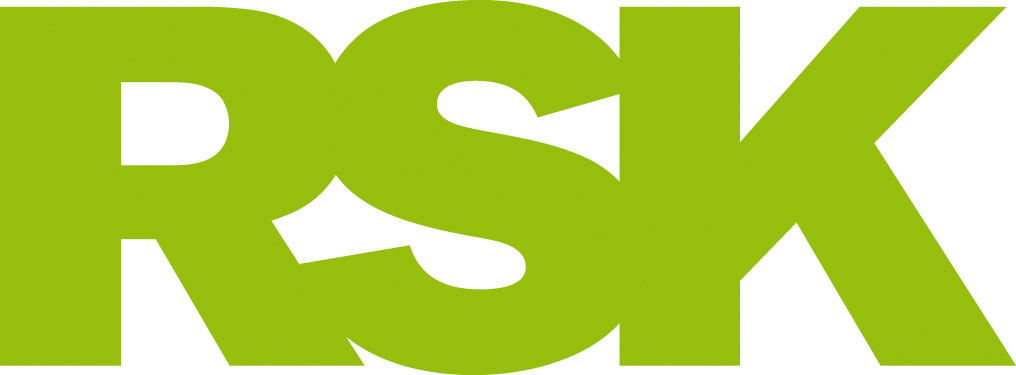ExperO3
|
|
The title
The title ExperO3 is a construction of the components of the project. In the project, in situ chemical oxidation (ISCO) is used with perozone for the remediation of a cocktail of organic contaminants at an EX-rated industrial site in operation.
Background
European soils contain many legacies from a less sustainable industrial past: soils, sediments, and groundwater are sinks for many contaminating substances. The European Environment Agency (EEA) estimates that the number of contaminated sites in the EU that can be cleaned up (that is, where the source of the contamination is no longer present) ranges from 300,000 to 1.5 million; the agency estimates the total cost of cleanup for these sites to be between € 59 and € 109 billion. However, there are also many sites where the source of the pollution is still present. This means the actual cleanup cost for contaminated sites in Europe will be a multiple of this estimate.
The major sources of contamination are chlorinated aliphatic hydrocarbons (CAH), BTEX (benzene, toluene, ethyl benzene, and xylene), and total petroleum hydrocarbons (TPH). These contaminants all have different chemical and physical characteristics and different means of biodegradation. This makes remediation of a site contaminated with a mixture of these pollutants very difficult, expensive, and time-consuming. Because of this, the threshold for starting remediation efforts is high and such efforts are often postponed.
The objectives
This project’s objective is to demonstrate the applicability of an innovative cost-, time-, and energy-efficient remediation technique for soil and groundwater contaminated with a cocktail of organic contaminants in very high concentrations at an explosion-sensitive site (i.e. an EX-rated site).
The project’s main purpose is to demonstrate the application of ISCO in chemical plants or storage areas that are in full operation and therefore have very high risks, primarily in terms of safety. This has not previously been demonstrated.
The targets
The project had the following main goals:
- Demonstrate the application of ISCO with perozone for the full-scale remediation of a soil and groundwater contamination case comprising a cocktail of different organic components in very high concentrations.
- Develop an extensive health and safety plan defining the necessary safety measures for using the technique at explosion-sensitive sites.
- Develop working procedures for technique implementation.
- Demonstrate the technique’s advantages (lower carbon emissions, more time-, cost-, and energy-efficient) compared with traditional remediation techniques.
- Evaluate the remediation technique in terms of viability and economic and environmental feasibility.
- Disseminate the knowledge gathered in this project to target groups and stakeholders.
The methodology
The project will start by developing an extensive health and safety plan for the pilot test to cover all safety-related aspects of using ISCO in an EX-rated area (2009).
After drafting the health and safety plan and defining the necessary safety measures, the project will conduct a pilot test at the subject site (2010). The goal of this pilot test is to gather the information needed to design the full-scale remediation (radius of influence of injection wells, degradation speed of contaminants, amount of oxidant required, and so forth). Based on the information gathered in the pilot test, the project will then design all aspects of the full-scale remediation (number and location of injection filters, amount of oxidant required, and so forth).
After pilot test completes, the project will evaluate the existing health and safety plan and the safety measures that were taken. The existing health and safety plan will then be updated for the full-scale remediation and the necessary safety measures for the full-scale will be defined.
In the next phase, full-scale remediation phase will begin (2011 - 2015). During this full-scale phase, the number of injection wells will be increased so the entire contaminated area will be covered. This must be done without interfering with the site’s operational activities. Project staff will monitor the demonstration and dissemination of knowledge during the entire project.
The proposed actions
A1. Project management and reporting to the EC
A2. Extensive H&S plan and definition of H&S measures for pilot test
The necessity of an extensive health and safety plan originates from European legislation (EU Directive 92/57/EEC ), Belgian legislation (legislation on Temporary and Mobile work sites), Vopak’s own safety requirements and not the least, the nature of the work that will be carried out.
The health and safety plan will be based upon the evaluation of the specific risks that can be expected during the pilot test. In order to carry out these risk assessments, the safety coordinator will have to combine and coordinate information on the remediation technique, the contamination that is present, the remediation installation (injection unit, ozone production unit, …), legislative safety requirements, Vopak safety requirements, …..
During the execution of the pilot test, the safety coordinator will perform a follow up, organize monitoring and consultation rounds. As the situation develops, the H§S-plan will be adapted accordingly.
A3. Execution of pilot test
The pilot test comprises the installation of 4 injection wells (*) with a filter depth of approximately 4.5-5m-bgl. The oxidant ‘perozone’ will be injected in these injection filters. Perozone is a mixture of hydrogen peroxide and ozone. Due to the reaction of hydrogen peroxide and ozone, very reactive OH radicals are created. Due to the reaction of ozone with the contamination, hydro peroxides are formed, which in their turn also create OH radicals. This double formation of OH-radicals ensures a very high oxidation capacity. Because of this, all types of organic contaminants can be oxidized with this technique.
Perozone will be injected with a flow rate of approximately 5-10 Nm³/hour. Excess air and ozone will be extracted through a vent on one of the monitoring wells. Air extracted from the vent will be directed over an active carbon filter to extract contaminants present in the air.
Contaminant degradation will be monitored by groundwater analysis in 5 monitoring wells. This allows monitoring of injection process , of degradation and of safety issues.
The goal of the pilot test is to gather the radius of influence of injection wells, time that is needed for the complete degradation of contaminants to harmless products, amount of oxidant needed (amount of ozone and hydrogen peroxide).
Based on this information the full scale remediation can be designed (number of filters needed, required filter depth, amount of oxidant needed, …).
A4. Evaluation of H&S plan for pilot and drafting of H&S plan for full scale remediation
In a first phase, the health and safety plan for the pilot test will be evaluated. The scale of the full scale project is much larger than the pilot phase. This means that impact of the remediation works on the normal working conditions of Vopak becomes even more important. Based on information gathered during the pilot test, work methods for the full scale remediation will be evaluated and the new circumstances will be incorporated in the health and safety plan.
A5. Full scale remediation
During the full scale remediation, the pilot test setting will be scaled up to cover the entire contaminated source area (76 injection wells were estimated). The injection wells will be installed in a grid and carried out in phases to guaranty the operations on the site. The remediation system is installed underground. A drain will also be installed which will be kept at constant vacuum to capture contaminant vapors and to detect potential ozone leakages.
Foreseen timeframe for the full-scale remediation is 3 years. Perozone will be injected in the soil through the injection wells. Excess air will be extracted and directed over an active carbon filter to extract contaminants present in the air. Contaminant degradation, process and safety parameters will be monitored regularly. Safety parameters will be followed carefully.
A6. Monitoring of demonstration
The monitoring of the demonstration project is carried out to measure and document the effectiveness of the project actions as compared to the initial situation, objectives and expected results. At the end of the project the technology will be validated by carrying out a ‘multi-criteria analysis (MCA)’. The ISCO technique will be compared to other techniques. In this comparison, environmental aspects, technical aspects, financial aspects and safety aspects will be taken into account. A full report of this validation of the technique will be presented to the commission as a deliverable of the project and will also be put on the project website.
We want to demonstrate that ISCO with perozone can be a remediation solution for sites with multiple-parameter soil and groundwater contamination and where contaminants are present in high concentrations. In addition, we want to demonstrate that ISCO can be used on explosion sensitive sites.
A7. Dissemination of knowledge
By the dissemination of knowledge the project partners want to show the feasibility and advantages of the technique of the ISCO with perozone and the remediation industry and other stakeholders will be informed of the methodology and advantages of the technique.
The dissemination of knowledge will be done by creating and maintaining an up to date project website, drafting and distributing leaflets and a yearly newsletter, taking part in conferences and seminars, organizing site visits and reporting yearly to Vopak and OVAM.
A8. After LIFE communication plan
The After LIFE communication plan sets out how the beneficiaries plan to continue dissemination and communicating results after the end of the project. The plan concludes: maintaining the website at least 5 years after the end of the website, writing a final newsletter for stakeholders and main target audience, publish the project results in the public annual report of Vopak and OVAM and on the website, and promote the ISCO technology by RSK’s Centre of Excellence to the whole RSK Group and its international clients.
The results
The expected results (outputs and quantified achievements) are:
- Develop a solution for the in situ remediation of an EX-rated site contaminated with multiple substances having different chemical and physical characteristics.
- Demonstrate that the application of ISCO with perozone will result in a significant reduction in contaminant concentrations in a relatively short period of time using only a limited number of injection points.
- Report on the technical and economic feasibility of using ISCO with perozone as a remediation technique for a cocktail of organic contaminants with very high concentrations (including pure product) compared with traditional remediation techniques.
- Execute risk assessments and develop an extensive health and safety plan for using ISCO at EX-rated sites.
- Develop two methods for implementing ISCO (one for the execution of the pilot test, the other for full-scale remediation) in such a way that they can easily be transferred to other EX-rated plants.
- Report on the benefits of this innovative technique (cost efficiency, time efficiency, energy efficiency, emissions reduction, carbon footprint minimization) compared with traditional remediation techniques.



